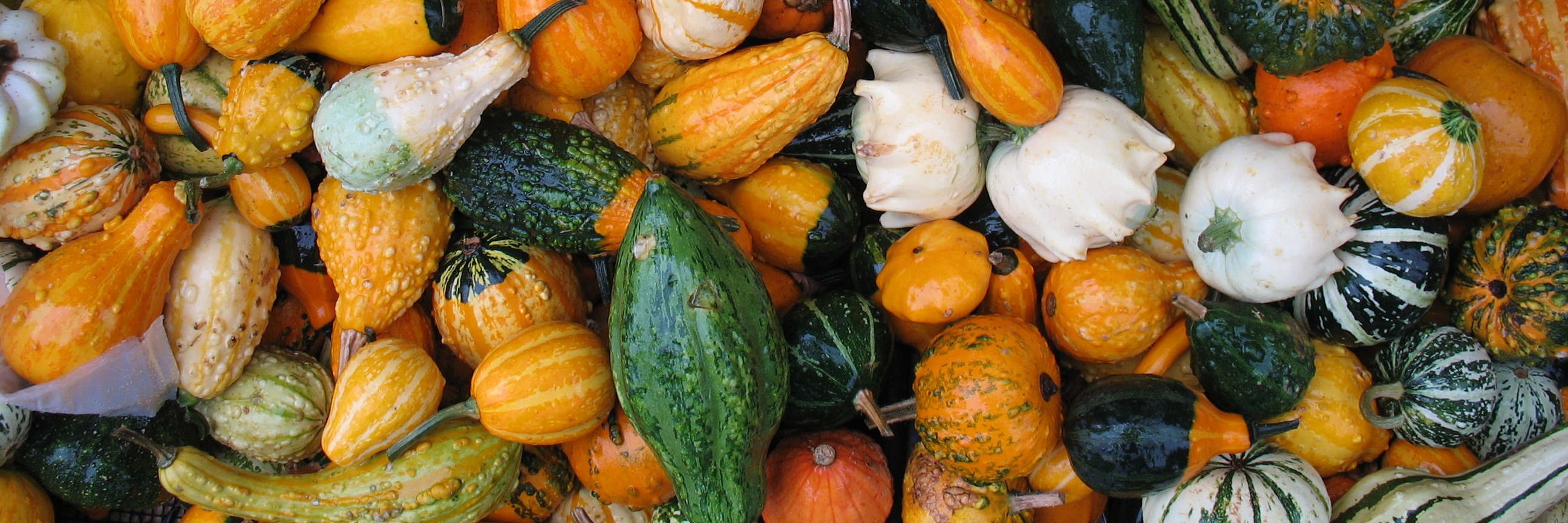2015 - Year of the Pumpkin

2015 is the Year of the Pumpkin in the Kleve Campus Tropical Greenhouse!
When most people hear the word ‘pumpkin’, they probably think of a typical jack-o’-lantern – that American Halloween tradition which features a carefully carved pumpkin lit by a candle inside. Definitely a spooky tradition!
Did you know it originated in Ireland? It’s true – years ago, many Irish would carve scary faces in turnips and illuminate them with a candle to ward off evil spirits. Irish immigrants brought this tradition with them to America, but replaced the turnip with the big, orange pumpkin, which is native to the Americas (and has a bit more scare potential than the turnip!)
Pumpkins are more than just scary props, though! The pulp that gets scooped out, for example, can be used to make a delicious soup. Pumpkin seeds can be pressed and turned into useful pumpkin seed oil. Let’s not forget pumpkin pie, pickled pumpkin, pumpkin bread and plenty of other creative uses!
What many don’t know is that ‘pumpkin’ is just one term for Cocurbita plants; the other commonly used names are squash and gourd. The exact name used for a specific plant depends on the type and species, as well as on local or regional culture. In fact, the different uses that cultures have found for pumpkins proves just how versatile these plants really are. In Africa, for example, the calabash (or bottle gourd) is used as a household tool, a water container or even a musical instrument. Interesting fact: calabash are the only squash which originate in Africa; all others originated in Middle and South America. Today there are around 800 different types of squash/pumpkins on earth, many of which are edible.
The largest pumpkins are invariably Cucurbita maxima, a specific species known for producing some truly whopping fruits. The largest on record was grown just last year, in 2014, and weighed over a tonne (1,045 kg to be exact) and had a circumference of 5.72 metres (nearly 19 feet!). Talk about a massive pumpkin!
We here in the Faculty of Life Sciences admit that we can’t compete with that, but what we can do is offer interesting facts and scientific research into pumpkin fruits and plants. If all this talk of pumpkins has you excited for autumn, then be sure to remember to visit our Pumpkin Fest in the coming Winter Semester 2015/16. We’ll open the campus greenhouse and invite anyone interested to join us for an educational and insightful evening dedicated to the pumpkin.
The exact date and time of the Pumpkin Fest will be announced later on our homepage and in the local press, so keep an eye out!
